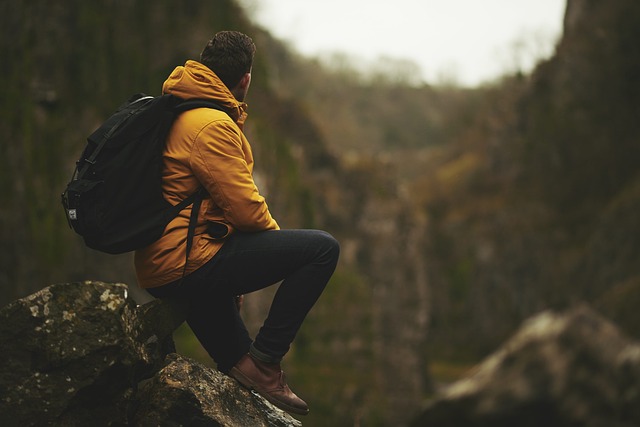When the allure of the backcountry calls and the weight of your pack matters more than ever, a bivy sack can be your best companion. These minimalistic shelters offer a lightweight, portable solution for hikers who prefer to sleep under the stars without the bulk of a traditional tent. But with so many options available, how do you choose the right bivy sack for your adventures? Let’s dive into the essentials.
Understanding Bivy Sacks: What Are They?
A bivy sack, short for bivouac sack, is a small, portable shelter typically made from waterproof or water-resistant materials. Originally designed for climbers and mountaineers as emergency shelters, bivy sacks have evolved into a staple for minimalist backpackers. They are essentially a weather-resistant cover that slips over your sleeping bag, offering protection from the elements while adding minimal weight to your load.
Why Choose a Bivy Sack Over a Tent?
Before we get into the nitty-gritty of choosing a bivy sack, let’s address the question: why opt for a bivy sack instead of a tent?
- Weight and Size: Bivy sacks are significantly lighter and more compact than tents, making them ideal for ultralight hikers or those who need to minimize their load.
- Stealth Camping: Their low profile allows for easier stealth camping, where discretion is key.
- Quick Setup: Bivy sacks can be set up in minutes, making them perfect for fast and light adventures.
Key Factors to Consider When Choosing a Bivy Sack
- Material and Waterproofing
The material of your bivy sack plays a crucial role in its performance. Look for sacks made from durable, breathable fabrics like Gore-Tex or eVent. These materials not only keep you dry but also allow moisture from your body to escape, reducing condensation inside the sack. Pay attention to the hydrostatic head rating—this tells you how waterproof the fabric is. A higher rating means better protection from rain and snow. - Weight and Packability
One of the main reasons hikers choose bivy sacks is for their lightweight nature. However, not all bivy sacks are created equal. Some are designed for extreme minimalism, weighing as little as 7 ounces, while others offer more features and weigh up to 2 pounds. Consider how much weight you’re willing to carry and how small you need your shelter to pack down. - Size and Fit
Bivy sacks come in different sizes to accommodate various body types and sleeping bags. Ensure that the sack is roomy enough for your sleeping bag and allows you to move comfortably. Some bivy sacks even have extra space for storing gear or sitting up, which can be a significant advantage in bad weather. - Ventilation and Breathability
Condensation can be a major issue in bivy sacks, especially in humid conditions. Look for sacks with mesh panels, zippered openings, or breathable fabric to increase airflow. Some models also feature a hooped design that lifts the fabric off your face, improving ventilation and comfort. - Weather Resistance
Depending on where and when you’ll be hiking, you may need a bivy sack that can withstand harsh conditions. For winter camping or high-altitude adventures, opt for a bivy sack with reinforced seams, a durable waterproof coating, and good wind resistance. For summer trips, a lighter, more breathable option may suffice. - Ease of Use
Bivy sacks are designed to be simple, but some models come with added features like zippers, poles, or stake loops that can make setup and use easier. Consider whether these extras are worth the added weight and complexity. - Price
As with any piece of gear, price is a factor. Bivy sacks range from budget-friendly options around $100 to high-end models costing $300 or more. Determine your budget and consider what features are most important to you. Sometimes, investing in a more expensive bivy sack can be worth it for the added comfort and durability.
Types of Bivy Sacks
There are several types of bivy sacks to choose from, each catering to different needs:
- Minimalist Bivy Sacks: These are ultra-lightweight and compact, ideal for fast-and-light backpacking trips where every ounce counts.
- Four-Season Bivy Sacks: Built to withstand harsh weather, these sacks are made from heavy-duty materials and often include features like poles or a hooped design.
- Bug-Resistant Bivy Sacks: Designed for warm climates, these sacks prioritize breathability and insect protection with mesh panels or netting.
Tips for Using a Bivy Sack
- Choose Your Site Carefully: When using a bivy sack, site selection is crucial. Look for a flat, dry area with some natural protection from the wind.
- Ventilation is Key: To reduce condensation, always keep the ventilation options open, even in cold weather.
- Use a Ground Sheet: A lightweight ground sheet can protect your bivy sack from abrasion and add an extra layer of moisture protection.
Conclusion
Choosing the right bivy sack involves balancing weight, weather protection, and comfort. Whether you’re an ultralight backpacker or a mountaineer facing extreme conditions, there’s a bivy sack out there to meet your needs. By considering the factors outlined in this guide, you’ll be well-equipped to make an informed decision and enjoy a good night’s sleep under the stars, wherever your hiking adventures take you.






